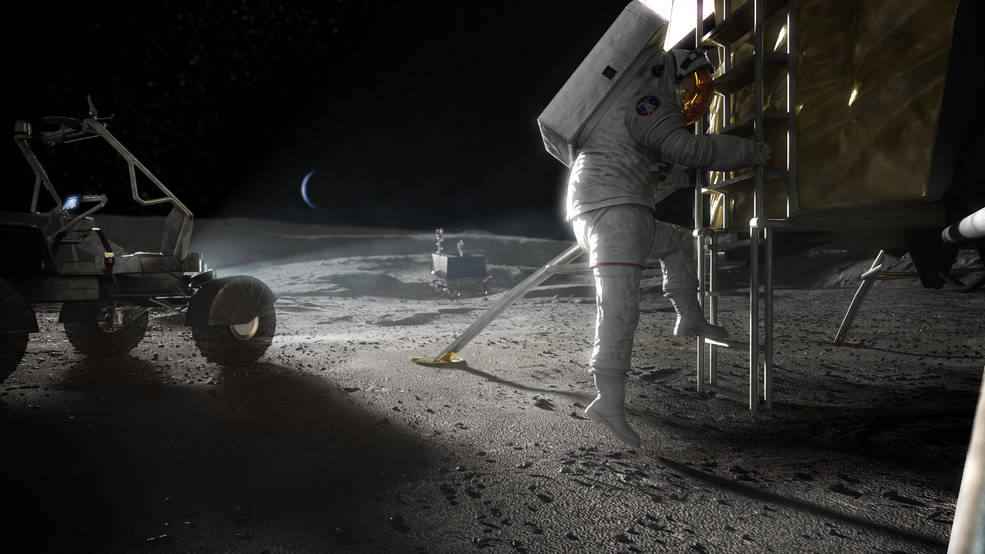NASA Artemis program selected five US companies for crewed trips to the moon
NASA has selected five U.S. companies to help the agency enable a steady pace of crewed trips to the lunar surface under the agency’s Artemis program. These companies will make advancements toward sustainable human landing system concepts, conduct risk-reduction activities, and provide feedback on NASA’s requirements to cultivate industry capabilities for crewed lunar landing missions.
NASA is committed to landing American astronauts on the Moon by 2024, including the first woman and the next man. We will deploy creative new technologies and systems to explore more of the Moon than ever before as part of the agency’s Artemis lunar exploration mission. By 2028, we will work with our commercial and international partners to build long-term missions. Then, using what we’ve learned on and around the Moon, we’ll take the next big step: sending astronauts to Mars.
Two missions will be launched around the Moon to test the agency’s deep space exploration systems. NASA is planning to launch Artemis I, an uncrewed mission to test the SLS and Orion spacecraft together, followed by Artemis II, the first crewed SLS, and Orion test flight. NASA plans to put astronauts on the Moon on the Artemis III mission in 2024, and about once a year after that.
[email-subscribers-form id=”1″]

NASA has set sights first on exploring the entire surface of the Moon with human and robotic explorers. They will send astronauts to new locations, starting with the lunar South Pole. At the Moon they will:
- Find and use water and other critical resources needed for long-term exploration
- Investigate the Moon’s mysteries and learn more about our home planet and the universe
- Learn how to live and operate on the surface of another celestial body where astronauts are just three days from home
- Prove the technologies we need before sending astronauts on missions to Mars, which can take up to three years roundtrip.
The contracts awarded under Appendix N broad agency announcement for Next Space Technologies for Exploration Partnerships (NextSTEP-2) are firm-fixed-price, milestone-based contracts. The grants are for a total of $146 million, and the work will take place over the following 15 months.

The companies that received awards and their award values are:
- Blue Origin Federation of Kent, Washington, $25.6 million.
- Dynetics (a Leidos company) of Huntsville, Alabama, $40.8 million.
- Lockheed Martin of Littleton, Colorado, $35.2 million.
- Northrop Grumman of Dulles, Virginia, $34.8 million.
- SpaceX of Hawthorne, California, $9.4 million.
“Establishing a long-term human presence on the Moon through recurring services using lunar landers is a major Artemis goal,” said Kathy Lueders, NASA’s associate administrator for Human Exploration and Operations at Headquarters in Washington. “This critical step lays the foundation for U.S. leadership in learning more about the Moon and for learning how to live and work in deep space for future missions farther into the solar system.”
The chosen firms will create lander design concepts and evaluate their performance, design, construction standards, mission assurance requirements, interfaces, safety, crew health accommodations, and medical capabilities. The firms will also conduct crucial component tests and advance the maturity of key technologies to reduce the risks associated with the lunar lander.

These businesses’ efforts will eventually inform the strategy and specifications for a future NASA request to offer regular crew transportation from lunar orbit to the Moon’s surface.
“Collaboration with our partners is critical to achieving NASA’s long-term Artemis lunar exploration goals,” said Lisa Watson-Morgan, Human Landing System Program manager at NASA’s Marshall Space Flight Center in Huntsville, Alabama. “By partnering with innovative U.S. companies, we will establish a robust lunar economy while exploring new areas of the Moon for generations to come.”
This opportunity is distinct from the initial crewed lunar landing demonstration mission awarded under the NextSTEP-2 Appendix H procurement, which will serve as the proof of concept for the Artemis architecture.
Artemis’ objectives include providing a long-term method to accessing the lunar surface that is both safe and cost-effective, as well as becoming one of many consumers purchasing services in a lunar transportation market. Much of what NASA produces on the Moon will be used on Mars in the future.
The NASA Artemis program includes landing the first woman and person of color on the Moon, deploying a package of new science instruments and technology demos to explore the Moon, and maintaining a long-term presence there.

